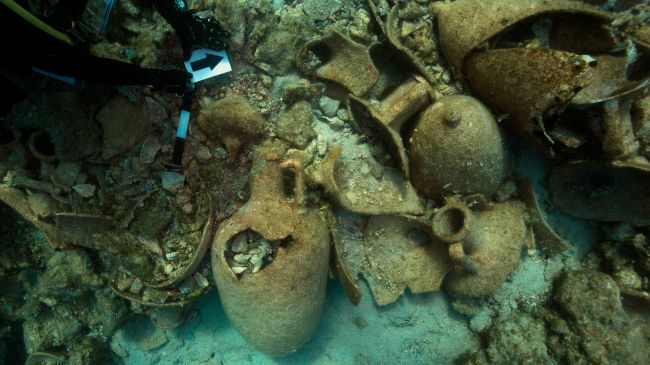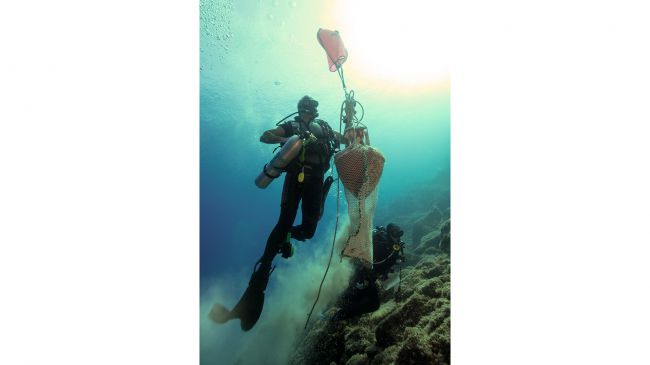Ancient sailors courted adventure and risked death on the Aegean Sea. And now divers have discovered five of their approximately 2,000-year-old shipwrecks and a giant, granite anchor pole near the tiny Greek island of Levitha.
These ships were laden with goods — largely amphorae, which are ancient jugs with slender handles and narrow necks that usually held valuable liquids, such as oil and wine. The amphorae came from the cities of Knidos, Kos, Rhodes, Phoenicia and Carthage, according to the Hellenic Ministry of Culture and Sports.
Dating to just before the middle of the third century B.C., the goods were made during a time when the Ptolemaic and Hellenistic Antigonid dynasties ruled maritime trade in the Aegean, the ministry reported.
Among the findings was a 880-lb.(400 kilograms) granite anchor pole, spotted nearly 150 feet (45 meters) underwater, that dates to the sixth century B.C. The anchor is so enormous, it likely came from a “colossal” ship,” the ministry said. (The statement was translated from Greek with Google translate.)
In addition to the five shipwrecks, the divers found other sunken vessels. One wreck had amphorae from the ancient Greek city of Knidos, located in what is now Turkey, that also dated to the third century B.C. Three other shipwrecks found nearby were carrying cargo that included cone (pointy-bottomed) amphorae. These wrecks dated to the second and first centuries B.C. and the second century A.D.

The last three newly discovered shipwrecks consisted of a first-century-B.C. vessel toting amphorae from the northern Aegean, a first-century-A.D. wreck with amphorae from Rhodes and a shipwreck with amphorae that dated to the early Christian period.
Researchers found the shipwrecks during an underwater excavation lasting from June 15 to 29, under the direction of archaeologist George Koutsouflakis, director of the Department of Underwater Archaeological Sites, Monuments and Research with the Ephorate of Underwater Antiquities, which is part of the Hellenic Ministry of Culture and Sports.

The effort included 57 group dives and 92 hours of work on the seabed. The project’s findings indicate that this sea route was heavily used from the Archaic to the Ottoman periods, the ministry said.
Archaeologists plan to study the area around Levitha, as well as the nearby Aegean islands of Mavria, Glaros and Chinaros, until 2021.

